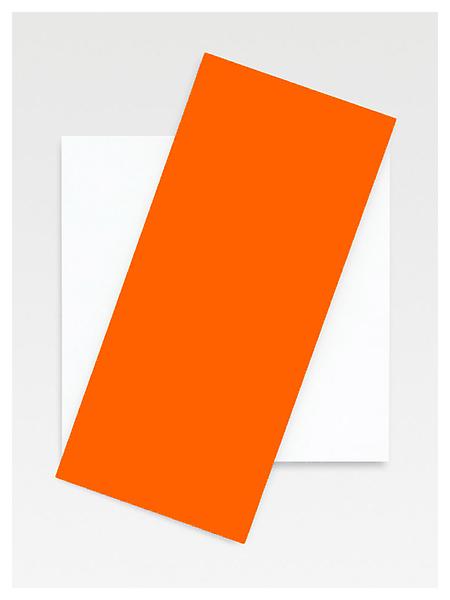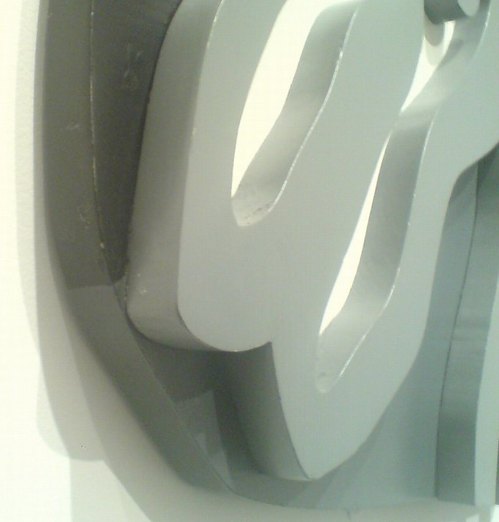It’s funny, all this time I’ve been looking hard at the brushstrokes of modernism, abstraction, and monochrome, trying to figure out how they were made–and, thus, how I might make some paintings myself–and I’ve ignored Jean Arp.
When I started wanting to figure out how to do crisp abstraction, I went to look at Dove and Mondrian, only to find drawing & filling in. Sheeler’s precisionist paintings were actually paint-up-to-the-pencil-line sketches.

When I started wanting to figure out monochrome objects, I looked at Truitt in front of Kelly, and surprised myself to find brushstrokes just all over the damn place.
Still, Truitt’s still Truitt, and Kelly’s still Kelly. I was at the National Gallery yesterday, accompanying the kid’s field trip, and their Truitt is pretty slick. And of course, their Atrium Kelly seems fantastic, if hard to see from the ground.

Orange Diagonal, 2008, via matthewmarks.com
And Kelly, talking about his recent relief paintings, did tell Carol Vogel, “What I’ve made is real — underline the word real. It becomes more of an object, something between painting and sculpture.” Which I am totally onboard with.

But which also suddenly reminded me of something I’d read about Thomas Scheibitz a few years ago, from a 2008 show at the Camden Arts Centre:
Scheibitz has developed his own grammar for painting on sculpture, which like his paintings, bows simultaneously to a residual interest in illusionism and representation and at the same time relishes the drips, splashes and material traces that are the legacy of painterly modernism. Indeed the whole point of painted sculpture rests upon it being a real object in space, which simultaneously inhabits an “artificial world”, by virtue of its disguised and painted exterior and its imagined and constructed form. It therefore exists in that realm of “second nature” that Scheibitz describes as the location of his work: the paint helps to suggest that the sculpture has a correlative in the “real” world, while simultaneously undermining any such belief. [emphasis added]
Which at one point, I guess I thought I was onboard with, but now I guess I either don’t understand or believe anymore. About Scheibitz’s undermining, that is. Painted sculpture is just not not real; it’s paint. On sculpture. Paint on an object. If line or color vary from form, I don’t see why that has to be illusory or not “true to the material.” Can’t it look like one thing at first, until you look more closely? Tension or complexity is feature; it shouldn’t all boil down simply to instant perception. I think this is particularly true in Scheibitz’s case as well as Truitt’s and Kelly’s.

The Forest, detail, 1916, nga has no image
And finding myself with time to stare at Jean Arp’s painted reliefs yesterday doesn’t change that one bit. First off, they are fantastic. The surface is slick, smooth, pristine, nonpainterly.

Shirt Front and Fork, detail, 1922, for which nga also has no image?
Without planning to take up Arp in relation to Kelly, Scheibitz, or Truitt, I found myself impressed by these painted lines, painting on wood. They exist apart somehow from the painterly modernist practice of their time, and seemingly in transgression of sculptural modernism, and yet they’re real. Underlined.
I don’t really know much beyond the Mod101 slideshow blurb about Arp, but I guess I’ll start digging and looking.
